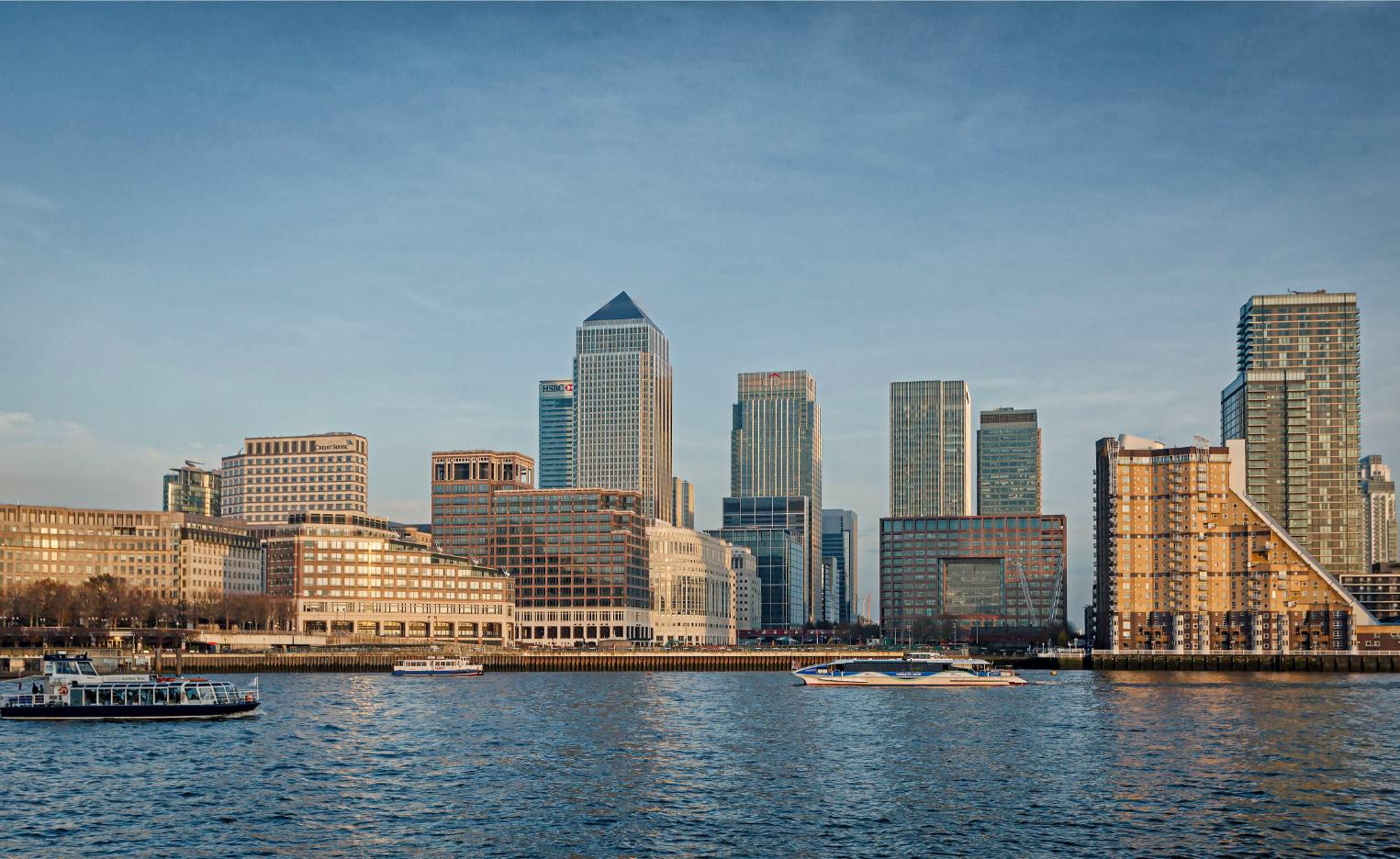Living in Canary Wharf

A derelict wasteland only 35 years ago, Canary Wharf symbolises the transformation of the Docklands. But it is not just a place for doing business. With new residential, leisure and retail developments it is becoming a very desirable – an increasingly affordable – area for Londoners to call home.
History of the area
The Canary Wharf estate is located on the Isle of Dogs, a peninsula in a bend of the Thames that was once a marshland. From the early 19th century it became the heart of London’s Docks. West India Dock and South Quay Dock were some of the busiest docks in the world, but as container shipping took over, the docks declined and eventually closed in 1980.
The regeneration of Canary Wharf was a major part of the redevelopment of London’s Docklands in the 1980s. The docks, warehouses and factories were cleared, and in their place came offices and apartment blocks. It was conceived as a central business district that would rival the City of London, and although it did not quite eclipse the City, Canary Wharf has become a major financial district in its own right. One Canada Square and 8 Canada Square (the HSBC building) are iconic features of the London skyline.
The property market
Living in Canary Wharf is not just for people working in the glass and metal towers overlooking West India Quay. It is true, apartments in the luxury developments of the Canary Wharf estate do not come cheap, but further afield on the Isle of Dogs and into Poplar and Limehouse there is a wide range of housing stock, with prices significantly lower than the London average.
New build homes
Modern apartments are going up all the time in and around Canary Wharf, and not just the high end luxury towers like Landmark Pinnacle and The Spire. The Wood Wharf development will include 3,300 new homes, with 900 of those being designated as affordable homes.
First time buyers
First-time buyers with reasonable budgets have plenty of choice in this area, whether they are looking for a luxury loft or a Victorian terrace.
Renting in the area
Average rents of properties on the Isle of Dogs are only £350-400 per week, much lower than the Central London average, and if you work in Canary Wharf you’ll have a walking commute.
Schools and education
Canary Wharf is no longer a place that people leave when they start a family. The wider area has a number of schools rated ‘outstanding’ by Ofsted, including Bygrove Primary and Mayflower Primary. Canary Wharf College has three sites in the borough – primary schools at East Ferry and Glenworth, rated ‘good’ and ‘outstanding’ respectively, and a secondary school at Crossharbour rated ‘good’. Canary Wharf also lies within the catchment area for schools in Limehouse, Poplar and Blackwall. The London campus of the University of the West of Scotland – yes, Scotland – is within the district. The campus was opened in 2015 and is popular with international students living in East London.
Transport links
Canary Wharf benefits from excellent connections to the rest of London and beyond. Jubilee Line trains get to Waterloo in nine minutes, and the DLR serves Canary Wharf. Crossrail is the latest arrival, linking Canary Wharf directly to the Elizabeth Line and direct trains from Essex to Berkshire. London City airport is two miles away on the DLR.
Lifestyle and leisure
Canary Wharf used to fall silent at 6pm and resemble a ghost town at weekends. No more!
Places to eat and drink
Crossrail Place has brought with it some amazing multicultural choices for dining, such as Chai Ki (Indian), Island Poké (Hawaiian) and Sticks’n’Sushi (Japanese). The Pergola on the north dock is always busy, and has fantastic views out over Docklands while you eat. Over on the east side of the Isle of Dogs, the Gun is an atmospheric riverside tavern that serves some of the best Sunday roasts in East London.
Where to shop
There are three extensive shopping malls on the Canary Wharf estate, at Cabot Place, Canada Place and Jubilee Place. High end brands are well represented here, as you might expect, alongside familiar high street names.
Things to do
The Museum of London Docklands explores the city’s maritime and trading history, while The Roof Garden at Crossrail Place is an unexpected oasis of green space in the heart of the financial district. The exotic glass domed garden is situated almost directly on the meridian line, so visitors can walk past Asian plants on the eastern side and plants of the Americas on the western side. It is free to visit and open until 9pm or sunset in the summer months.
Enjoy modern twists on fairground games at Fairgame Canary Wharf, and theatre and stand-up comedy at The Space on Westferry Road.
Felicity J Lord can help you buy, sell or rent in Canary Wharf
If you like what you’ve read, we can help you buy, sell or rent in the Canary Wharf area. Get in touch with the friendly team at our Canary Wharf branch and they will be happy to help.






